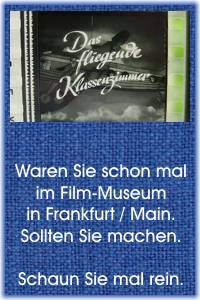"off duty" 1970 - 1997 - eine Freizeit-Zeitung für's US-Militär
Die in diesem amerikanischen (Freizeit-) Shopping-Magazin angepriesenen Hifi- und Video-Produkte waren auschließlich amerikanischen und kanadischen Militärangehörigen zugänglich - also zu kaufen - und vor allem zu ganz ungewöhnlich (verblüffend) niedrigen US $ Military-Preisen. Zu der einführenden "off duty" Seite geht es hier lang. - Um 1970 begann der weltweite Hifi-Boom bis zum 1. Crash 1978 und dann wieder zum 2.Crash um 1990. Über die 20 Jahre nach 2001 lesen Sie mehr in den Kolumnen auf diesen japanischen Seiten.
.
Das 4-Kanal Rennen um die Marktführerschaft
In den anderen US-Hifi-Magazinen wurde das in 1972 viel ausführlicher dargestellt. Hier tut sich Walter Rios etwas schwer. Es war schon ein Kampf der Japaner untereinander auf dem amerikanischen Markt.
.
The 4-Channel Race Goes On and On and On
CBS hat auf der CES mit SQ "voll zugeschlagen"
THE ENORMOUS head start that CBS has in the 4-channel race was everywhere in evidence at Chicago's Consumer Electronics Show in June.
At a brightly decorated CBS exhibit, pretty hostesses handed visiting dealers a late catalog of SQ quadraphonic releases and a booklet of hoopla, "The SQ Story," describing the virtues of matrixing.
Since about 100 SQ-encoded discs are already on sale - many of them, incidentally, available in PXs - manufacturers of hardware were more than ready with matrix-type systems in every price class, ready for the ordering.
JVC-Nivico and National-Panasonic powern auch noch CD-4
Only JVC-Nivico and National-Panasonic included CD-4 demodulators, for the rival discrete-4-channel system from RCA, in their product lines.
But engineer Lou Dorren, whose quadracast system of broadcasting discrete 4-channel is up for consideration by the FCC, helped the RCA cause along with sample quadraphonic transmissions from a ministation on the floor of the exhibition hall.
This induced receiver manufacturers to tune in for demonstration purposes, using borrowed demodulators plugged into the 4-channel jacks provided on latest tuners.
Dorren's Quadro über Rundfunkwellen
Dorren's broadcasts featured RCA quadradiscs, of course, since his multiplex system of quadracasting makes him the natural ally of all discrete 4-channel source material.
Matrixing is anathema to the Dorren method, for an encoded signal can be broadcast as conventional stereo and requires neither FCC sanction nor the purchase of any additional equipment by radio stations.
That's what gives CBS its natural advantage: simplicity. The station puts an SQ-encoded signal on the air without fussing. The listener plays it back through a matrix decoder which manufacturers can easily build into quad equipment in every price range.
Echtes 4-Kanal "klingt" besser ......
In the face of this, do RCA and its discrete 4-channel allies really stand a chance?
Their opposing argument is quality. They are out to prove that discrete sound is better because a 4-4-4 system stays discrete on the way to the listener, while matrixing (a 4-2-4 system) gets scrambled along the way.
"Like unscrambling an egg," argues RCA - and some of the discussion at a CES symposium on the subject was heated enough to add the toast.
Die Gegenargumente .....
The CBS counter argument is that discrete discs can't make it in the marketplace because they are "audi-ophile items" that require costly equipment: a new cartridge with frequency response to 60,000 Hz and a special demodulator.
While RCA insists that these problems have been solved and mass-produced playback equipment for CD-4 will be available soon in every price range, CBS says that its SQ-encoded discs already have enough information in the groove to satisfy the fussiest audiophile. It's just a matter of improving the available decoders.
Anmerkung : Das ist nicht richtig, die SQ oder QS codierten Rillen produzieren ein Frequenzgemisch, welches sich mit Stereoabtastern merkwürdig anhört.
.
Und noch eine Legende ..
Wes Ruggles Jr., an American engineer whose firm, Connaught Equipment Ltd., is European licensee for SQ and produces decoders for the CBS system, says that a properly designed SQ decoder with "full logic" circuitry delivers the left-right and front-rear separation required to satisfy the purist.
However, this complicated circuit is not yet available in a low-cost IC, so most manufacturers opt for simpler front-rear "half logic" or use even cheaper matrixes with no logic circuitry at all.
- Anmerkung : Laut der SQ-Spezifikation - im Pioneer QX-949 Technical Manual exakt abgedruckt - sind die Kanaltrennungen von Vorne nach Hinten im Bereich von 3dB und damit oft gar nicht wahrnehmbar.
.
Und keiner will nachgeben, also Kampf auf Messers Schneide
With neither side showing any sign of giving in, the two systems could well end up coexisting - just as the post-World War II "war of the speeds" left us with both 78 and 45 rpm.
The dealers' number one hangup, duplication of inventory, is already evident as CBS repertory appears in regular stereo at standard prices while SQ versions are released at a premium.
RCA's competitive ploy in promising a compatible quadradisc at no increase in price, is labeled "dirty pool" by Ruggles - because, he says, the new type disc costs more to make.
So I asked independent record producer Enoch Light, whose "Project 3" recorded repertory is encoded according to both Sansui/EV and SQ matrix systems, how he felt about CD-4.
"I offered to take my 4-channel master tapes down to RCA and cut them in CD-4, but they said they weren't set up for it yet. They'll let me know when they're ready."
And, sure enough, it turned out that all the discrete 4-channel product on demonstration at CES, even the two RCA quadradiscs with English-language jackets, were JVC discs imported from Japan. Looks like RCA, while arguing long and loud, has yet to unlimber its ordinance.
.
By WALTER B. BIOS in August 1972
.





